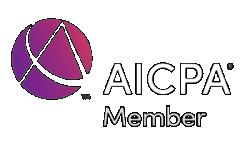Millions of people rely on their IRAs to save for retirement. These investment accounts allow individuals to save money tax-free until they withdraw the funds during retirement. The most common IRAs include the traditional IRA, Roth IRA, and SIMPLE IRA.
Recent IRA changes signed into law under the Secure Act 2.0 affect how Americans can save toward retirement through IRAs.
Here’s what to know.
Increased Contributions
The annual IRA contribution limit is $6,500 in 2023 ($7,500 if age 50 and older), which is up from the contribution limit of $6,000 in 2022. The IRA contribution limits apply to your combined traditional and Roth IRA contributions. This means if you have a Roth IRA and a traditional IRA, your contributions to both cannot exceed the $6,500 limit in 2023. Under the rules for catch-up contributions to traditional and Roth IRAs, individuals over 50 can save an additional $1,000 per year tax-free on top of the $6,500 base limit. That bonus makes it easier for people nearing retirement age to build up their savings.
The Secure Act 2.0 requires the IRS to adjust the catch-up contribution limit for inflation beginning in 2024. That will be helpful in future years, allowing for more significant savings in the traditional and Roth IRA accounts.
Secure Act 2.0 does adjust the catch-up contribution limits for SIMPLE IRAs. In 2023, the catch-up contribution limit is $3,500, but it will jump by 10% in 2024 under the new law. Secure Act 2.0 also creates a new contribution bucket for individuals aged 60 to 63. People within the age range will qualify for catch-up contributions equal to $5,000, which will adjust annually for inflation.
Adjustments to the Required Minimum Distribution Rules
Under the Secure Act 2.0, individuals must begin taking required minimum distribution (RMD) payments from their traditional and SIMPLE IRA retirement plans at the age of 73 (up from age 72 under prior law). The Secure Act 2.0 also increases the age for required minimum distributions to 75 in 2033.
Another update from Secure Act 2.0 is penalties. In the past, missing RMDs resulted in a 50% reduction in the withdrawal amount. The new penalty is 25%, which decreases to 10% if the required minimum distribution is taken by the end of 2023.
Of course, those with Roth IRAs do not need to meet any minimum withdrawal restrictions. They can continue to withdraw money from their accounts at any time, for any reason, since their contributions are made after taxes. The Secure Act 2.0 extends those withdrawal provisions to cover Roth 401(k)s and 403(b)s beginning in 2024.
Changes to Inherited IRAs
Surviving spouses and other specific eligible designated beneficiaries (EDBs) who inherit a traditional or SIMPLE IRA from an older partner or parent will receive tax treatment as the IRA holder. This means that they can delay required minimum distributions until they reach the age of 73.
However, the new rules concerning inherited IRAs only apply to individuals who inherited the account in 2020 or later. They do not apply to inherited IRAs received before 2020. The designated beneficiary must be an individual and cannot be a nonperson, such as estates or nonqualifying trusts.
In addition, the Secure Act 2.0 requires individuals who inherit an IRA whose original owner met the requirements for required minimum distributions to withdraw the entire balance of the IRA over a 10-year window, regardless of their current age. During that time, they must make minimum withdrawals or face tax penalties.
The Takeaway
Secure Act 2.0 brings changes to all IRAs, including traditional, Roth, and SIMPLE IRAs. Some of these adjustments are complex, particularly concerning inherited IRAs. Those with inquiries concerning the Secure Act 2.0 and its effect on IRAs can contact The Law Offices of Lawrence Israeloff, PLLC, for clarification.





